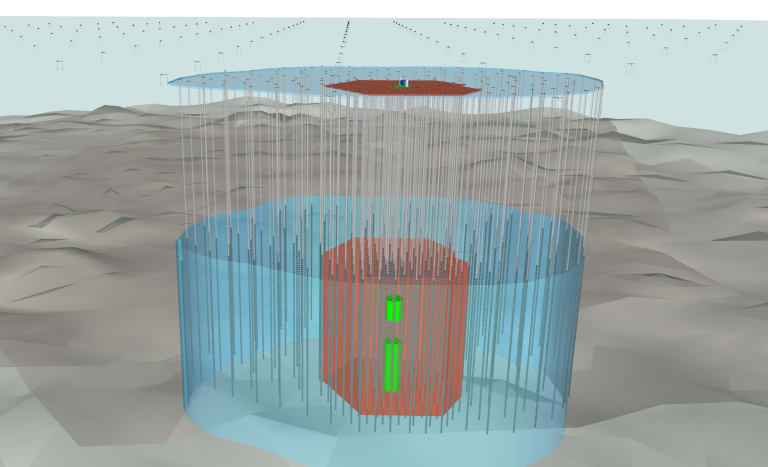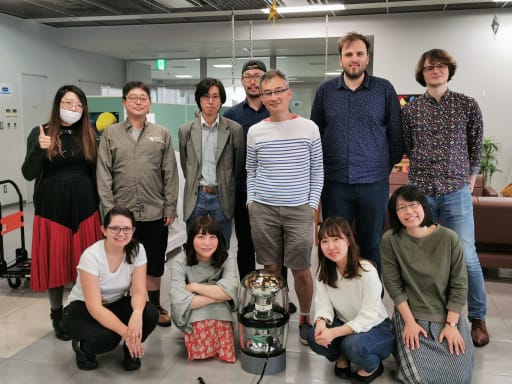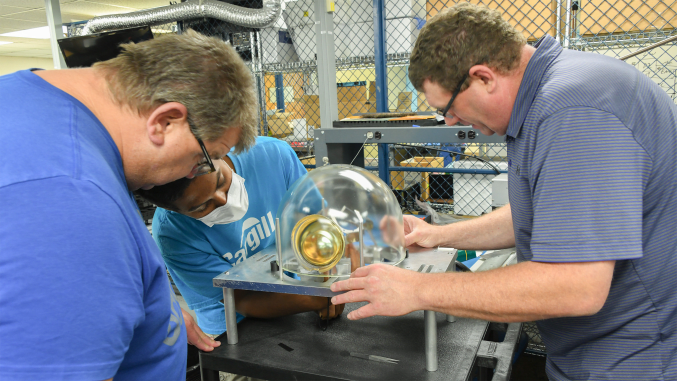IceCube-Gen2, pushing the frontiers of neutrino astrophysics and particle physics
IceCube-Gen2 is the next-generation South Pole neutrino observatory. Planned as an extension of the current IceCube Neutrino Observatory both in terms of size and energy range, IceCube-Gen2 will increase its capabilities as a multipurpose detector facility.

The future observatory builds on the exceptional properties of the Antarctic ice sheet to detect light and radio signals created by the interaction and passage of high-energy particles, which includes an overwhelming number of cosmic-ray muons but also over a million neutrinos every year. And the chance to see such a large number of neutrinos makes the imagination of scientists soar.
IceCube-Gen2 is envisioned to explore, using neutrinos, uncharted regions of the extreme universe that remain opaque or blurry to other cosmic messengers. And in the same way that the James Webb Space Telescope is revealing sharper and more detailed images of deep space, IceCube-Gen2 will unlock a window onto the darkest regions of our universe, traversing all dust clouds and extragalactic fields and bringing us closer than ever to the inner workings of black holes. Already, with the recent observation of the active galaxy NGC 1068, we have found evidence for neutrino production within less than one hundred Schwarzschild radii of the supermassive black hole.
And if the highest energy neutrinos are the key to the still indeterminate sources of the most energetic cosmic rays, they also happen to be a unique tool for testing the limits of particle physics and, possibly, discovering particles and phenomena beyond the Standard Model as well.
A first peek into IceCube-Gen2 science

The features of the IceCube-Gen2 detectors, hosted by the NSF-managed Amundsen-Scott South Pole Station, are as incredible as the science they will enable.
A core detector will be the IceCube-Gen2 optical array, with a size eight times larger than the current IceCube and optimized to detect neutrinos with energies ranging from hundreds of TeV to tens or even a few hundreds of PeV. In this regime and during the first 10 years of operations, astrophysicists expect to identify tens of sources of neutrinos, such as certain types of AGNs, starburst galaxies, or newborn pulsars.
On top of the optical array, the IceCube-Gen2 surface array, a set of cosmic-ray detectors combining scintillators and radio antennas, will allow filtering millions of muons entering the ice at the same time that just a few neutrinos interact near the IceCube-Gen2 light sensors. This array will also help improve our understanding of hadronic interactions in air showers and allow a cross-check of the calibrations of the optical and radio arrays.
This surface array will also be used to deepen our understanding of cosmic rays, with improved measurements of the cosmic-ray flux and mass composition and a new test bed for hadronic interaction models.

A shallower radio array will spread over a larger area and allow the observation of the highest energy neutrinos in nature. The discovery of cosmogenic neutrinos would be a new feat in astrophysics and would provide definitive proof of the origin of ultra-high-energy cosmic rays, described by many as the “Oh-My-God” particles.
An international team of diverse and skilled scientists and technicians
Before delving into more about the IceCube-Gen2 detectors and the science they will produce, it is only proper to first describe the team that is already working to make IceCube-Gen2 possible.


The IceCube-Gen2 Collaboration is made up of over 400 scientists and technicians from all over the world and builds on the IceCube organization, headquartered at the University of Wisconsin–Madison, which currently operates IceCube. The construction of the different IceCube-Gen2 detector arrays is led by collaborators in the U.S. as well as in Germany and Japan, with contributions from 12 other countries. But if we have learned anything from IceCube, it is that every person counts and that together more discoveries are achieved.

